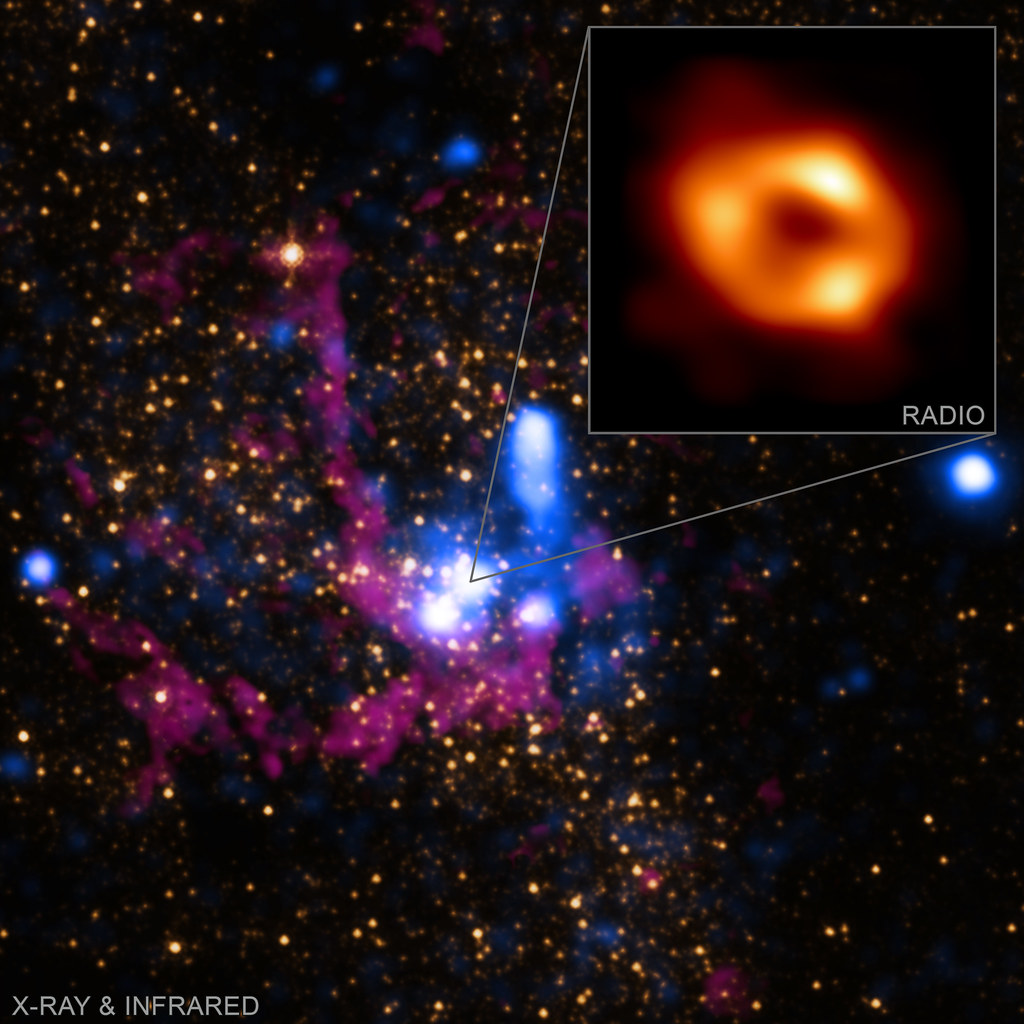Introduction
Both scientists and members of the general public have always been fascinated by the prospect of black holes existing somewhere in the vastness of the cosmos. These mysterious phenomena are notorious for their potential to consume everything that passes through their event horizons because of the massive gravitational force that they exert. Sagittarius A* (also written as Sgr A) is the name of the black hole that is located in the constellation Sagittarius and is the one that is closest to Earth. In the past, it was believed that black holes were remote celestial entities. We dive into the mysteries that surround Sgr A and its significance in our knowledge of the cosmos in this essay.
The Observations That Led to the Discovery of Sgr A* Radio observations led by Bruce Balick and Robert Brown in the early 1970s led to the discovery of Sgr A* for the first time. Sagittarius, the constellation in which Sgr A* may be found, is approximately 26,000 light-years away from Earth. This distance places it near the very center of our galaxy, the Milky Way. Due to the fact that it provided evidence for the presence of supermassive black holes in the centers of galaxies, its discovery represented a key event in the field of astronomy.
Characteristics as well as the Origins
The mass of Sgr A* is estimated to be around 4 million times greater than that of our sun, which classifies it as a supermassive black hole. The event horizon of this massive black hole is only roughly 24 million kilometers (15 million miles) in diameter, despite the fact that the black hole itself is so enormous. Due to its minuscule size, it is extremely challenging to see directly. As a result, specialized equipment, like as radio telescopes and interferometers, is required in order to perform observations.
The slow accretion of mass over a period of billions of years is thought to be the process that leads to the formation of supermassive black holes like Sgr A*. Although the precise mechanics that led to their development are still the subject of active investigation, the consensus among scientists is that black holes originated from the debris left behind by enormous stars that disintegrated as a result of their own gravitational attraction and collapsed.
Interactions with the Matter in the Environment
The low amount of activity that Sgr A* has in comparison to other supermassive black holes is one of the characteristics that sets it apart from other such objects. Sgr A, on the other hand, appears to have very little going on. Other black holes are known to aggressively consume the matter in their surroundings, sending off tremendous jets of energy and generating brilliant accretion disks. This quiet behavior has perplexed scientists, resulting to speculations speculating that Sgr A may have depleted the matter that is present in its immediate environs or that its accretion rate is fundamentally low.
In spite of this, there are sporadic situations in which Sgr A* displays increased activity. This is especially the case when it comes into contact with clouds of gas and dust in the area. The result of these interactions is the emission of electromagnetic radiation with a spectrum of different wavelengths, ranging from radio waves all the way up to X-rays. Researchers are able to get important new understandings about the operation and dynamics of black holes through the study of these emissions.
Observations That Have Implications for Astrophysics
When it comes to our efforts to comprehend the fundamental nature of black holes and the role they play in the development of galaxies, Sgr A* is of the utmost importance. The key predictions of Einstein’s theory of general relativity have been validated by observations of Sgr A*, substantially reinforcing our confidence in this foundational concept of modern physics.
Researching Sgr A* also gives useful information for analyzing the complex relationship that exists between black holes and the galaxies in which they are hosted. The formation of stars and the distribution of materials within galaxies are both thought to be affected by the presence of supermassive black holes, which are believed by scientists to have a significant bearing on the evolution of galaxies.
The ongoing Investigations and Developments of the Future
In spite of the difficulties that its observation presents, scientists are continually working toward the goal of deciphering the mysteries of Sgr A. Our current and future research endeavors, which include the use of cutting-edge telescopes and space missions, have the overarching goal of enhancing our comprehension of black holes and shedding light on the mysteries that surround Sgr A.
Conclusion
The supermassive black hole known as Sgr A* is located at the center of our galaxy, the Milky Way, and is the one that is closest to Earth. Our knowledge of black holes and the function they play in the universe has been fundamentally altered as a result of its discovery. Our understanding of the universe that we live in will undoubtedly advance as a result of the ongoing research and exploration being conducted by scientists on Sgr A*. In the meantime, we can look forward to the scientists revealing even more of the mysteries that are concealed by these astounding cosmic events.
![]()
